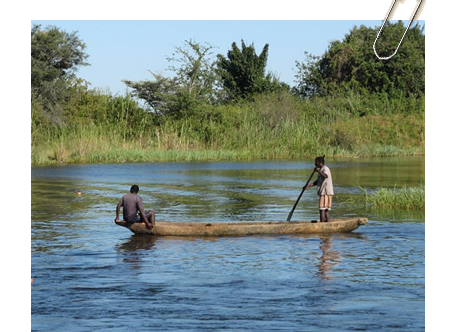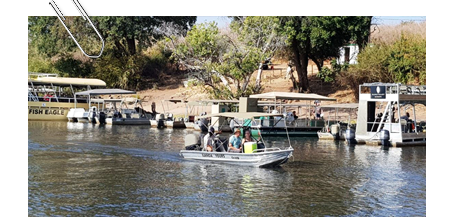Unlocking the tourism potential of the Chobe River
The Chobe River forms the boundary between Namibia and Botswana and provides critical access for dry season wildlife watering. Herds of elephant and buffalo move between the woodlands of Botswana’s Chobe National Park and the vast grassland floodplains across the river in Namibia and a thriving tourism industry has developed. Thanks to the Chobe National Park, Botswana has infrastructure for a major tourism industry in the Kasane – Kazungula area.
Due to the difficult terrain and annual flooding on the Namibian side, there is very little infrastructure development and the area has largely remained a subsistence agriculture and fishing economy. Communal conservancies in the area, with the help of IRDNC and the Kavango Zambezi Tranfrontier Conservation Area (KAZA-TFCA) secretariat, are making efforts to develop alternatives rural livelihoods, with tourism becoming an important and sustainable source of income. IRDNC supports seven conservancies in the region, made up of the Chobe East Cluster (Impalila, Kasika and Kabulabula conservancies) and the Chobe West Cluster (Sikunga, Salambala, Lusese and Nakabolelwa conservancies).
The Chobe River as a shared tourism resource is used by both countries for game viewing, public transport and cross border trade. The rapid increase in boating for different activities requires better self-regulation of boat and tour operators and the implementation of an agreed Code of Conduct (CoC). The CoC is essential to harmonise tourism operations, harness tourism development opportunities at a landscape-level, guide the use of the shared water courses to address conflicting river-uses and activities, and address trans-boundary natural resource management and environmental issues. This required extensive stakeholder engagement with river users, local communities, government officials, the tourism industry, conservationists, as well as harmonization of strategies, policies and practices in between the two countries.
The Chobe is not declared an International Inland waterway although it can be treated as such through treaty arrangements. The Hague Ruling and the Kasane Communiqué treat the main channel as international waters in which boats registered in the two countries and carrying tourist visitors can move freely. However, both countries are members of the SADC Protocol on Shared Watercourses which requires the member states to promote the harmonisation and monitoring of legislation and policies for planning, development, conservation, protection of shared watercourses.
The draft CoC is now developed, with Standard Operating Procedures (SOPs) on use of the International Waters, water abstraction, river pollution and waste management, boat travel, river-based and land based tourism conduct including lodges and safaris, conduct of fishing people, human-wildlife conflict management and security forces. The CoC has subdivided the Chobe River into 14 different zones based on tourism densities and sensitive habitats identified, each with applicable SOPs.
The CoC recommends that conservancies adjacent to the Chobe receive support from Namibian authorities in order to enforce conservation zones, fishing regulations and settlement allowing the conservancies to develop their own tourism and financial revenue streams. All Namibian land and river-based tourism operations could obtain contracts with the conservancies for tourism rights.

- The Chobe River forms the boundary between Namibia and Botswana and provides critical access for dry season wildlife watering.

- The Chobe River as a shared tourism resource is used by both countries for game viewing, public transport and cross border trade.



